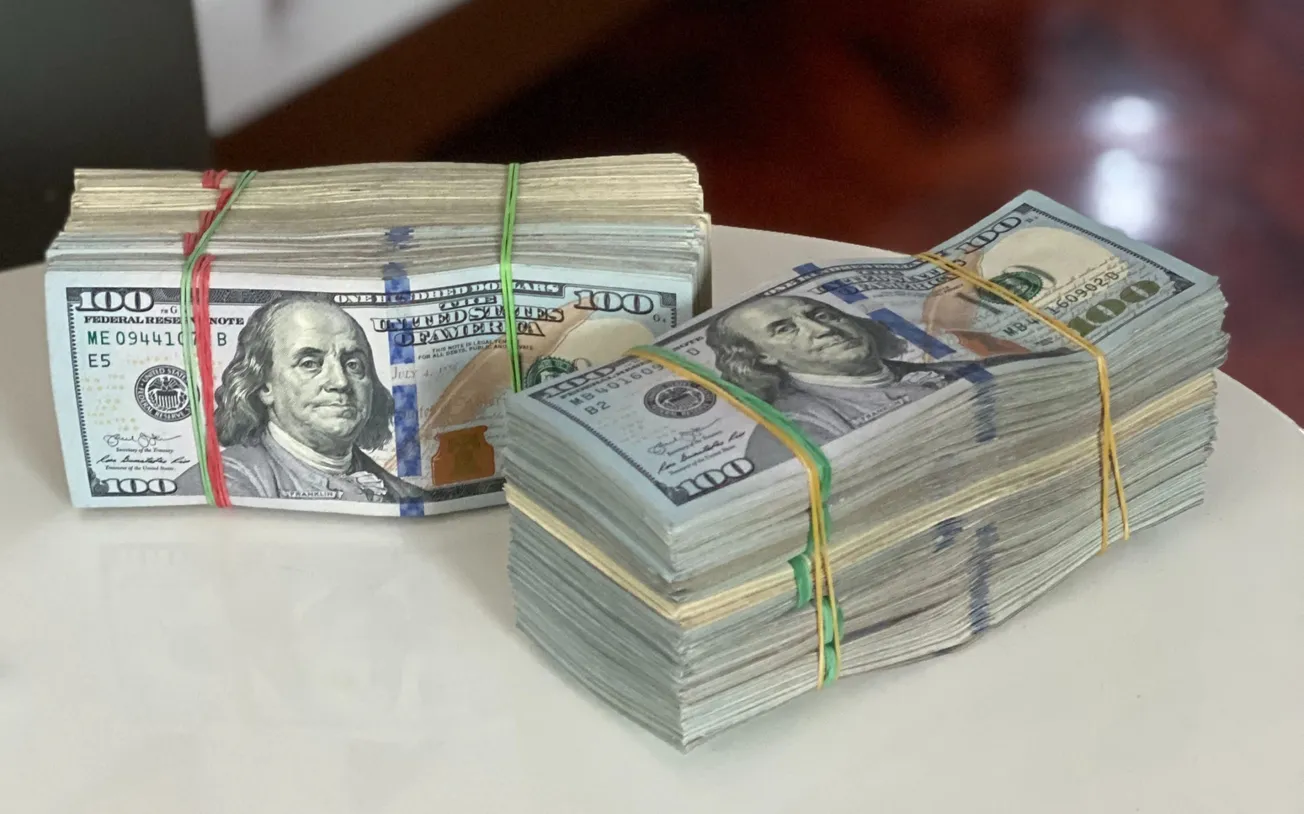Table of Contents
The US Department of Justice has been making more of an effort lately to prosecute cryptocurrency-related frauds. They even announced they would do more of this going forward. And some of these recently prosecuted frauds boggle the mind. So here we are going to look at snippets from a few charge documents. These schemes, to the extent the court papers are accurate, are insane.
It’s not so much that they were frauds. Rather, the brazen and absurd nature of these frauds – and the amount of dollars raised by each of them – really makes one question where some of the money in crypto is coming from. And who these investors are.
Also: sorry/not sorry for the quote-heavy nature of this column. These scams deserve to be told in the absurdly dry language of a US prosecutor.
Circle Society
This is nothing to do with Circle the major payments processor. It’s a totally different beast. Someone named Saffron raised about US$15 million for fake trading bots. The marketing approach was straightforward:
To lull the victim-investors and create the appearance of wealth and success, defendant SAFFRON would host events for prospective investors at luxury homes in the Hollywood Hills, dinners at high-end restaurants, and travel with a team of armed security guards.
And they promised wild returns:
Defendant SAFFRON would falsely represent to victim investors that he “guaranteed” returns of 150% – 300% that would be paid to investors within 30 days after the initial investment, and he would keep any excess profits above that amount for his own compensation.
Surely it’s a red flag when the fund manager says their fee is only the profits in excess of 300% per month? But it gets better. As is the theme here, this guy surely “went big”:
Defendant SAFFRON would make numerous false representations to victim-investors to induce them to invest cash or cryptocurrency in defendant SAFFRON’s cryptocurrency Ponzi scheme, including that defendant SAFFRON:
a. Was a computer programmer who was the lead developer for the Uber App and Snapchat App;
b. Wrote the security software used by most U.S. banks;
c. Developed an AI trading bot that was as advanced as IBM’s AI “Watson,” which was known for defeating reigning champions on the TV gameshow Jeopardy;
d. Had perfected the programing of his AI trading bot to execute profitable trades 76 percent of the time; and
e. Had a series-7 securities broker’s license.
Those look like easy claims to verify surely. Do you believe one person developed Uber, Snapchat and the “security software used by most U.S. banks” and is also a trading genius but somehow looking to raise money for a fund? Also, the series-7 bit is trivial to check at this website.
And the ending of the story is depressingly predictable:
Defendant SAFFRON used the funds from early victim investors to pay the purported returns to the new prospective investors because defendant SAFFRON did not actually have an AI trading bot and did not trade investors’ funds on exchanges.
Baller Ape Club
What a name! The Baller Ape Club was a rug-pull. But not quite in the way you think. Generally in a rug pull, a team makes claims about future development, raises funds, and then doesn’t do the development. These guys built only a super-simple website pre-launch and claimed features would start appearing post-mint:
The Baller Ape Club Website also claimed that a “rarity app … will be available via our website after minting is complete, thus will allow all holders to get their exact [NFT] rarity statistics!”
Promising to deliver even the first bit of functionality after collecting the funds is a clear red flag. But this scam went one further. Sure there was a roadmap that never got built. But:
the Baller Ape Website instructed the potential investor to “Please connect your wallet to buy Baller Ape NFTs.”…the potential investor would click on a “Mint” button and be instructed to approve a transaction transferring SOL to four particular SOL crypto wallet addresses….The Baller Ape Website then falsely informed the investors that their transactions failed…the SOL would in fact be transferred.
After raising US$2.6 million they disappeared, deleting their online presence. But it was not just a rug-pull:
Defendant TUAN and his co-conspirators provided no NFTs or any of the promised benefits…
They didn’t even provide worthless NFTs. They provided literally nothing.
Mining Capital Coin
Let’s get one thing out of the way upfront here: this one raised US$ 62 million. These guys ran a fake crypto mining company alongside fake trading bots. And boy did they go big. In a video purporting to show off their (fake) mining facility Capuci, the head guy stated:
“l didn’t spend money to go to Africa, Nigeria, or whatever, to do a Ponzi scheme.”
And falsely claimed to have seven other offices where MCC conducted mining as well.
It’s usually a good sign when someone rejects the idea they are running a Ponzi scheme in promotional materials and also does not know specifically where they spent investors’ money.
This one also includes allegations of boring old securities fraud. But today that is not enough. Today we need truly absurd and likely easily-falsifiable claims. And wow did Capuci deliver:
a. CAPUCI falsely and fraudulently represented that MCC used thousands of mining machines and that MCC had partnered with the World Bank to secure an investment in eco-friendly power generators…
b. CAPUCI falsely and fraudulently represented that MCC had submitted applications to have CapitalCoin, MCC’s own cryptocurrency, listed…
c. CAPUCI falsely and fraudulently represented that MCC was licensed by the North Carolina Commissioner of Banks as a “Virtual Currency Dealer.”
d. CAPUCI falsely and fraudulently represented that MCC had a partnership with the Clinton Foundation…
e. CAPUCI falsely and fraudulently represented to investors that he was a former agent with the Federal Bureau of Investigation.
You have to respect that. A partnership with both the World Bank and Clinton Foundation, by a soon-to-be-listed-somewhere organization holding a type of license the founder just invented, where said founder is a former FBI agent? Surely that is worth at least US$62 million.
Also, one imagines the “fake FBI agent” thing does not go over well with the actual FBI agents who end up interviewing you!
EmpiresX
What’s worse than pretending to be an FBI agent or pretending you had a series-7? How about this:
To further entice investors to invest, EmpiresX touted JOSHUA DAVID NICHOLAS as a “genius” trader and offered investors a separate investment option of having NICHOLAS manually trade their cryptocurrency investment in the U .S. financial markets. As part of these marketing efforts, during an investor call on or about July 2, 2021, JOSHUA DAVID NICHOLAS fabricated his personal and professional background, including by misrepresenting himself as Victim J.N.G. (who had no affiliation with EmpiresX), and concealing his prior ban by the NFA for eight years for investment-related misconduct.
The filings put quotes around the word “genius.” That is, in and of itself, “genius.” As this person was actually FINRA-registered we can even find out why they were banned:
The findings stated that Nicholas engaged in futures contracts through an outside business activity (OBA). Two of Nicholas’s OBA customers lost more than $1 million as a result of his futures trading. In a purported effort to recoup some of their losses, Nicholas convinced the customers to invest $300,000 in a promissory note with his OBA so that entity could invest the additional funds in securities on their behalf. However, Nicholas transferred $280,000 from his company’s bank account to his personal bank account and spent approximately $58,000 of these funds on personal expenses.
So not really a genius then. There’s a lot more in there. These folks raised about US$100 million in what the government alleges was another crypto trading bot Ponzi scheme. And they unsurprisingly:
diverted investors, funds to cover personal expenditures, including exotic vehicles, clothing from high-end retailers, and attorneys’ fees.
There are also allegations of securities fraud and all manner of odd things. It is kind of reassuring to find out they spent some of the money on lawyers though. These folks were paying some attention, somewhere, to something. But we also know it wasn’t the paperwork they claimed to file with the SEC (because they never did). Investors could have checked that pretty easily too.
Who are these investors?
On some level you have ask yourself: what were these investors thinking? Of course the regulators should investigate and prosecute frauds. And sometimes it is genuinely difficult to figure out if an idea is real. Jim Chanos has, repeatedly, called this “the golden age of fraud.”
But these schemes are absurd and the claims these fraudsters made boggle the mind. If you just Google a few of the made-up terms it is clear they are lies. And the FBI agent bit? If you call up the FBI and say “someone is claiming to be a former agent but I don’t believe them,” you can be sure they are happy to help! That’s a fresh easy-to-prosecute case right there. Plus the SEC makes filings easy to search. They may not always be easy to read or find. But they sure are easy to check once someone gives you a filing reference number.
Reasonable people can disagree on the extent to which regulators around the world have failed to keep up with problems in the cryptocurrency space. But it is also high time investors start taking more responsibility for some of their mistakes. EmpiresX raised US$100 million promising people 1% return per day in US equities.
Fraud is bad and all, but as characters from Larsen Whipsnade (1939) to Mickey Bricks (2004-2012) said “you can’t con an honest man.”









